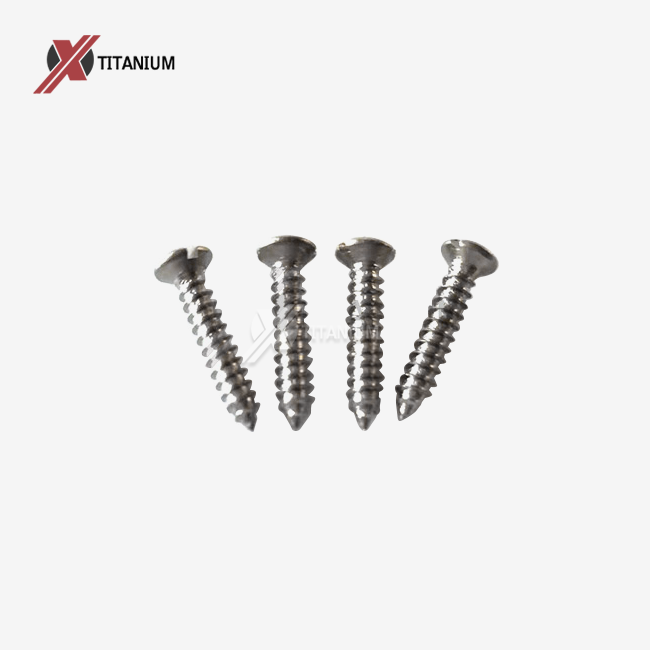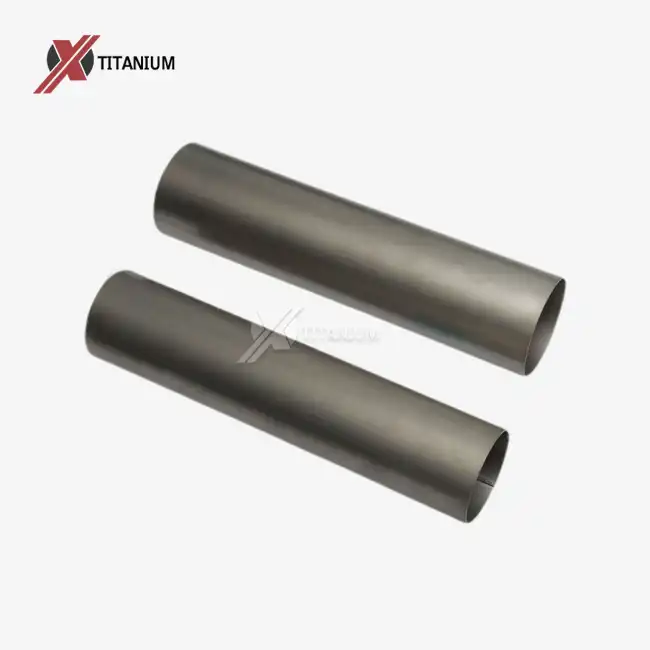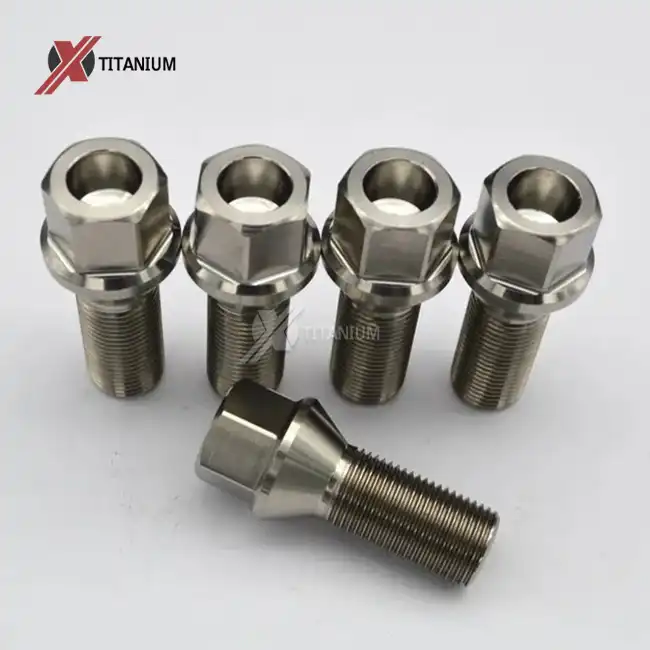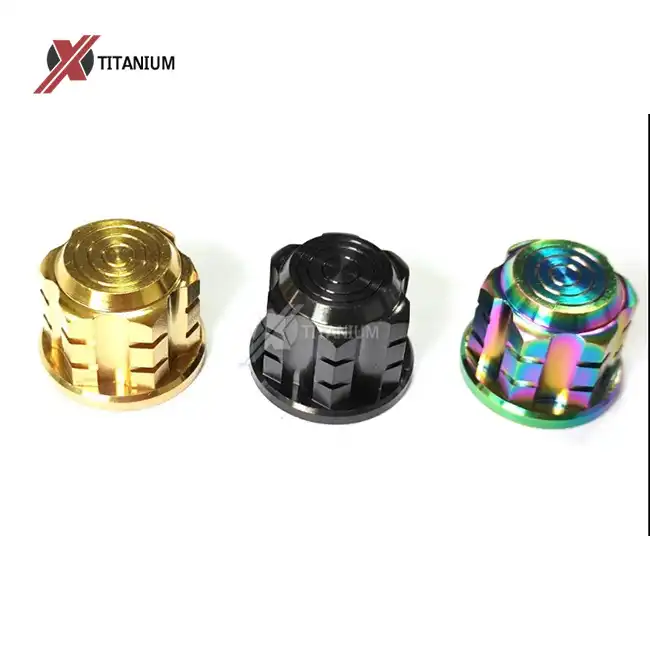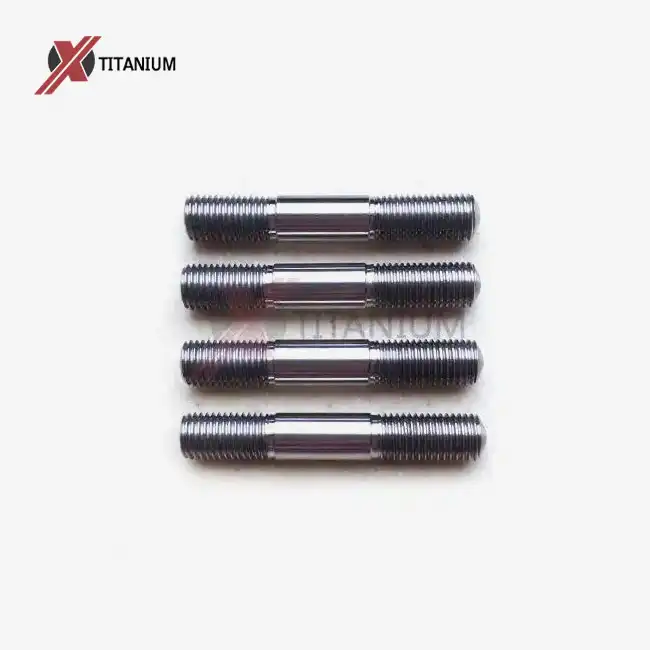Understanding Titanium Self Tapping Screws: Properties and Applications
Titanium self tapping screws are a marvel of modern engineering, combining the exceptional properties of titanium with the convenience of self-tapping technology. These screws are crafted from high-grade titanium alloys, typically Grade 5 (Ti6Al4V) or Grade 2, which offer an impressive blend of strength, lightness, and corrosion resistance.
The unique properties of titanium make these screws ideal for a wide range of applications. Their high strength-to-weight ratio means they can provide robust fastening without adding significant weight to the overall structure. This characteristic is particularly valuable in industries such as aerospace, automotive, and marine, where weight reduction is crucial for performance and efficiency.
Titanium's excellent corrosion resistance is another key feature of titanium self tapping screws and these screws. They can withstand exposure to saltwater, acids, and other corrosive environments, making them suitable for use in harsh conditions. This resilience ensures long-lasting performance and reduces the need for frequent replacement, even in challenging settings like offshore platforms or chemical processing plants.
The Self-Tapping Advantage
The self-tapping feature of these screws is what sets them apart from standard titanium screws. Self-tapping screws are designed with a specially shaped tip and threads that can cut their own mating threads as they are driven into a material. This design eliminates the need for pre-tapping holes, saving time and labor in installation processes.
However, it's important to note that while titanium self tapping screws can create their own threads, they still require careful handling during installation to prevent stripping. The hardness of titanium, combined with the cutting action of the self-tapping design, can sometimes lead to issues if not installed correctly.
Essential Tools and Preparation for Installing Titanium Self Tapping Screws
Successful installation of titanium self tapping screws begins with having the right tools and proper preparation. This ensures not only a secure fastening but also prevents damage to the screws and the material being fastened.
Tools Required
1. Drill with adjustable torque settings: A high-quality drill with precise torque control is crucial for working with titanium self tapping screws. The ability to adjust torque helps prevent over-tightening and potential stripping.
2. Drill bits: Choose drill bits appropriate for creating pilot holes. For titanium screws, high-speed steel (HSS) or cobalt bits are recommended due to their durability.
3. Screwdriver or driver bits: Use a screwdriver or driver bit that fits the screw head perfectly. Ill-fitting tools can lead to slippage and potential stripping.
4. Lubricant: A lubricant specifically designed for use with titanium can reduce friction during installation, making the process smoother and reducing the risk of galling.
5. Protective gear: Safety glasses and gloves are essential when working with any type of screw or drill.
Preparation Steps
1. Material assessment: Evaluate the material you're fastening into. Different materials may require different pilot hole sizes and installation techniques.
2. Screw selection: Choose the appropriate size and length of titanium self tapping screws for your specific application. Consider factors such as the thickness of the material and the load the screw will bear.
3. Pilot hole drilling: While self tapping screws can create their own threads, a pilot hole is often beneficial, especially in harder materials. The pilot hole should be slightly smaller than the screw's minor diameter.
4. Clean workspace: Ensure your work area is clean and free from debris that could interfere with the installation process.
5. Marking: Accurately mark the locations for your screws to ensure precise placement.
Advanced Techniques for Preventing Stripping During Installation
Even with the right tools and preparation, installing titanium self tapping screws requires skill and attention to detail to prevent stripping. Here are some advanced techniques to ensure a successful installation:
Proper Alignment and Pressure
Maintaining proper alignment is crucial when installing titanium self tapping screws. Start by positioning the screw perpendicular to the surface. Apply steady, consistent pressure as you begin to drive the screw. This helps the screw start cutting its threads evenly and reduces the risk of it wandering off course, which can lead to stripping.
Speed Control
The speed at which you drive the screw is critical. Begin at a low speed to allow the screw to start cutting its threads. As the screw begins to engage, you can gradually increase the speed. However, avoid high speeds, especially towards the end of the installation, as this can generate excessive heat and increase the risk of stripping.
Torque Management
Titanium self tapping screws require careful torque management. Start with a low torque setting on your drill and increase it gradually as needed. Pay attention to the resistance you feel as you drive the screw. If you encounter sudden increased resistance, stop immediately to avoid stripping. The final tightening should be done carefully, preferably by hand, to achieve the right balance between a secure fit and avoiding over-tightening.
Heat Management
Titanium can generate significant heat during the threading process. This heat can cause the screw to bind or even weld to the surrounding material, leading to stripping. To prevent this, use a lubricant suitable for titanium and take breaks during installation to allow the screw and material to cool down. This is particularly important when installing multiple screws in close proximity.
Backing Out Technique
If you feel the screw beginning to bind or strip, don't force it. Instead, try backing the screw out slightly and then re-engaging. This can help clear any material that might be causing the binding and allow for smoother thread cutting. In some cases, completely removing the screw and starting over with a slightly larger pilot hole may be necessary.
By employing these advanced techniques, you can significantly reduce the risk of stripping when installing titanium self tapping screws. Remember, patience and attention to detail are key to achieving a secure and long-lasting fastening.
Conclusion
Installing titanium self tapping screws without stripping requires a combination of proper tools, careful preparation, and advanced techniques. By understanding the unique properties of titanium screws, selecting the right tools, and employing methods such as proper alignment, speed control, torque management, and heat management, you can achieve successful installations even in challenging materials.
Remember that practice and experience play a significant role in mastering the installation of these specialized fasteners. Don't hesitate to start with less critical applications to hone your skills before moving on to more demanding projects.
For more information about titanium self tapping screws and other titanium products, please contact us at info@cltifastener.com or djy6580@aliyun.com. Our team of experts at Baoji Chuanglian New Metal Material Co., Ltd. is always ready to assist you with your titanium fastener needs and provide guidance on proper installation techniques.
